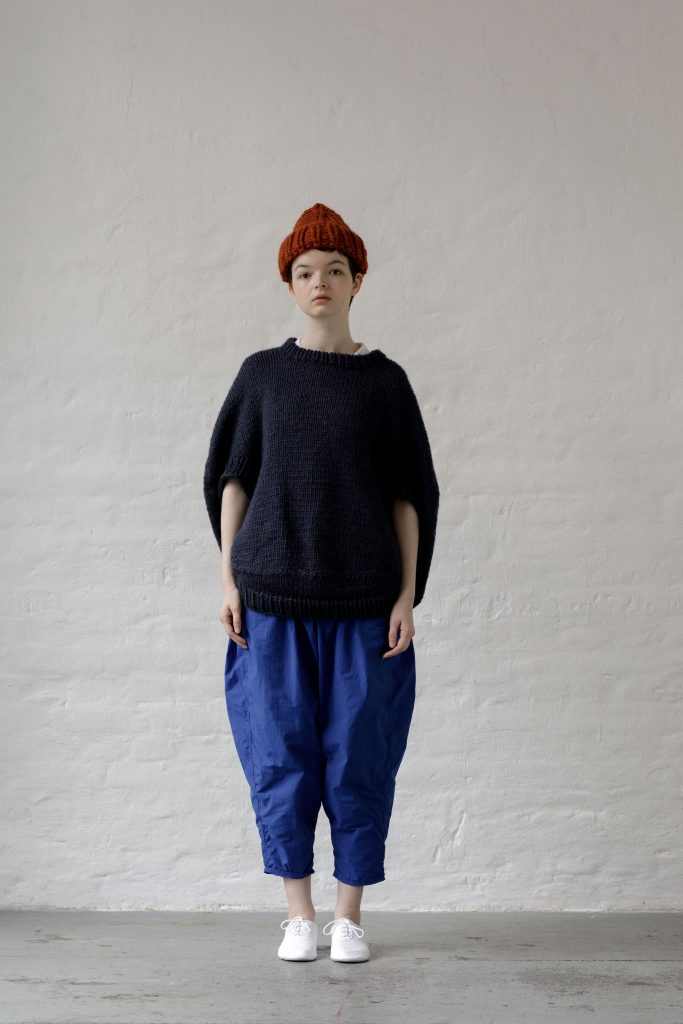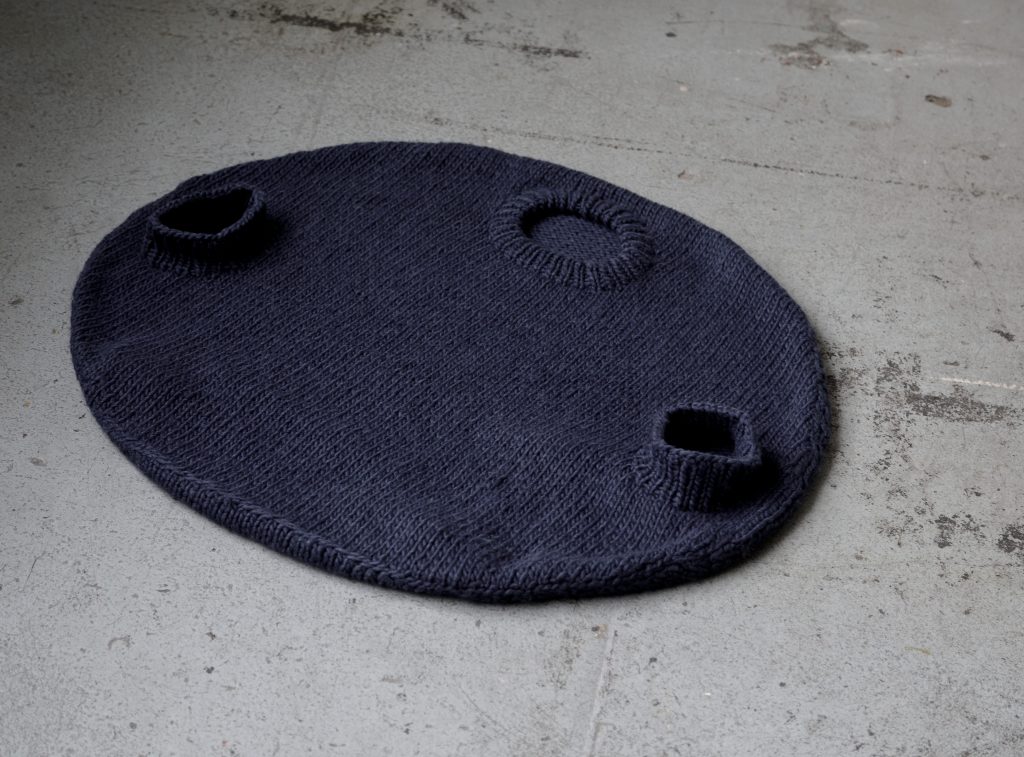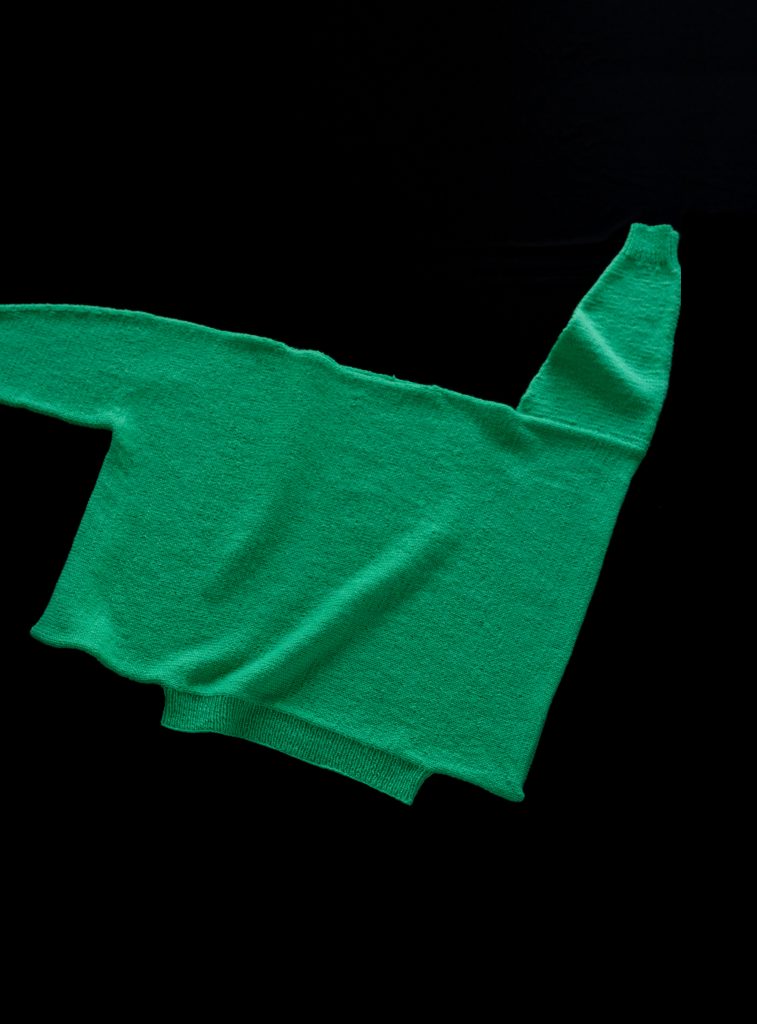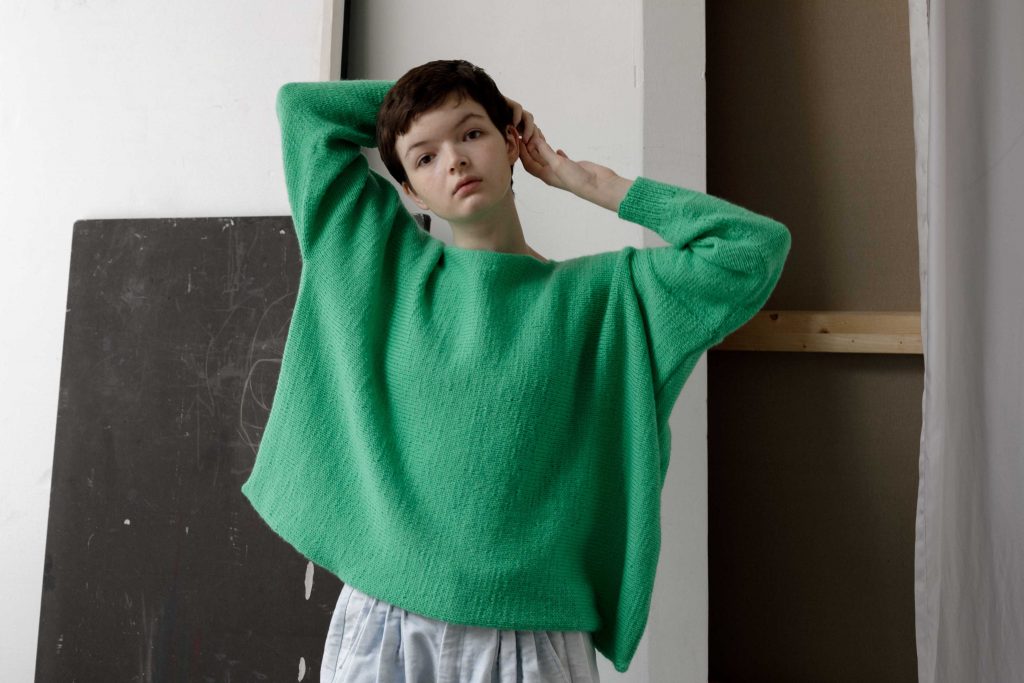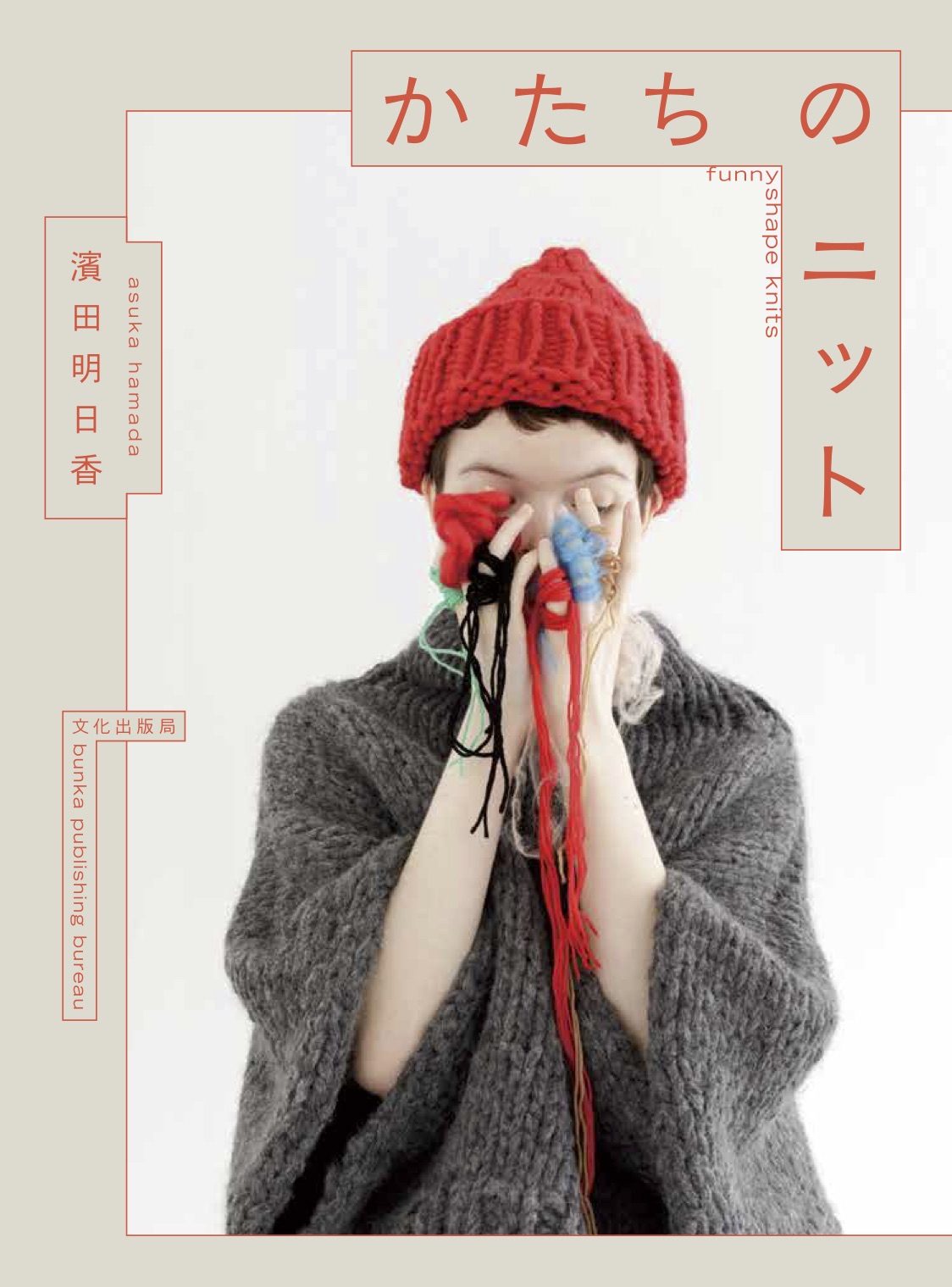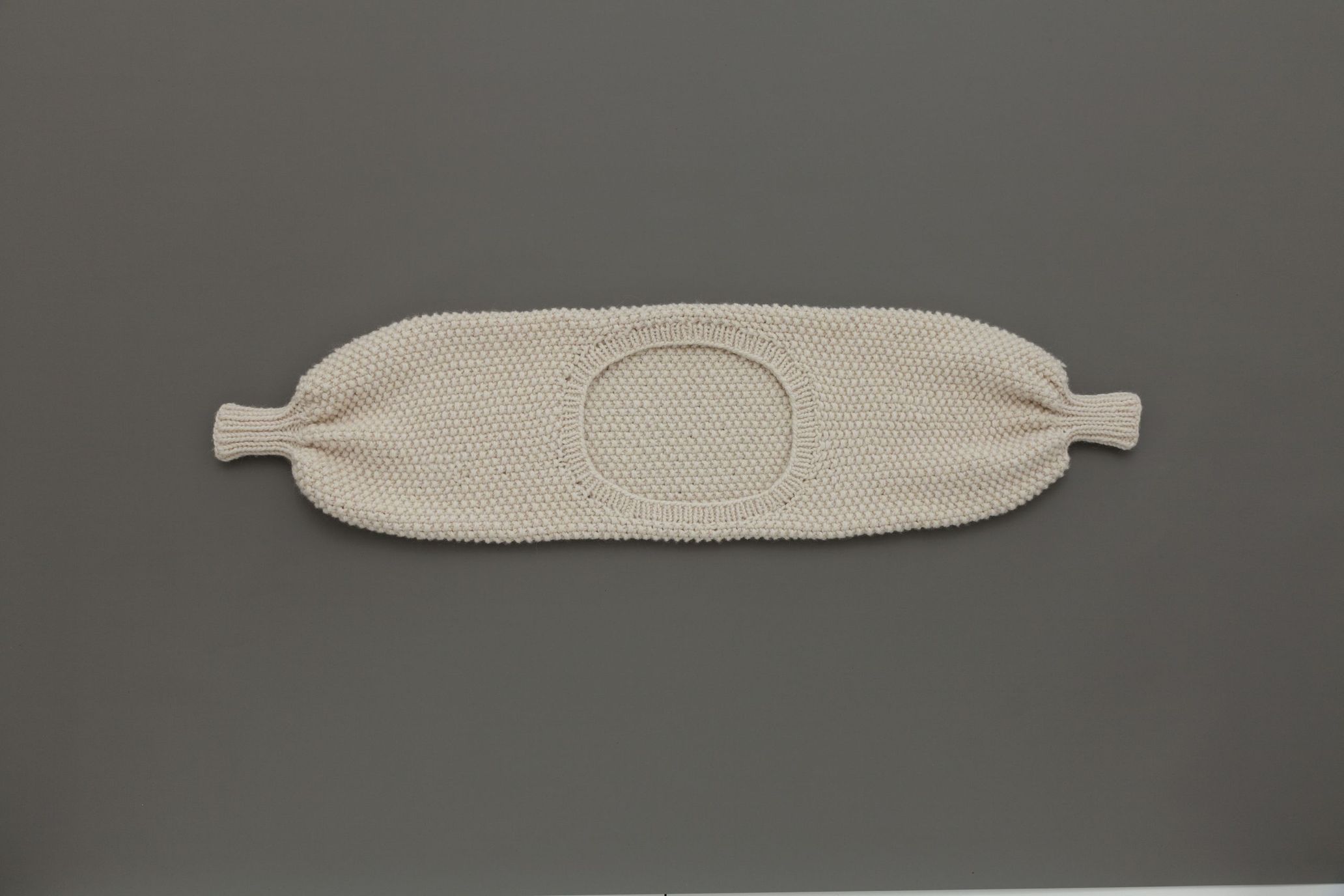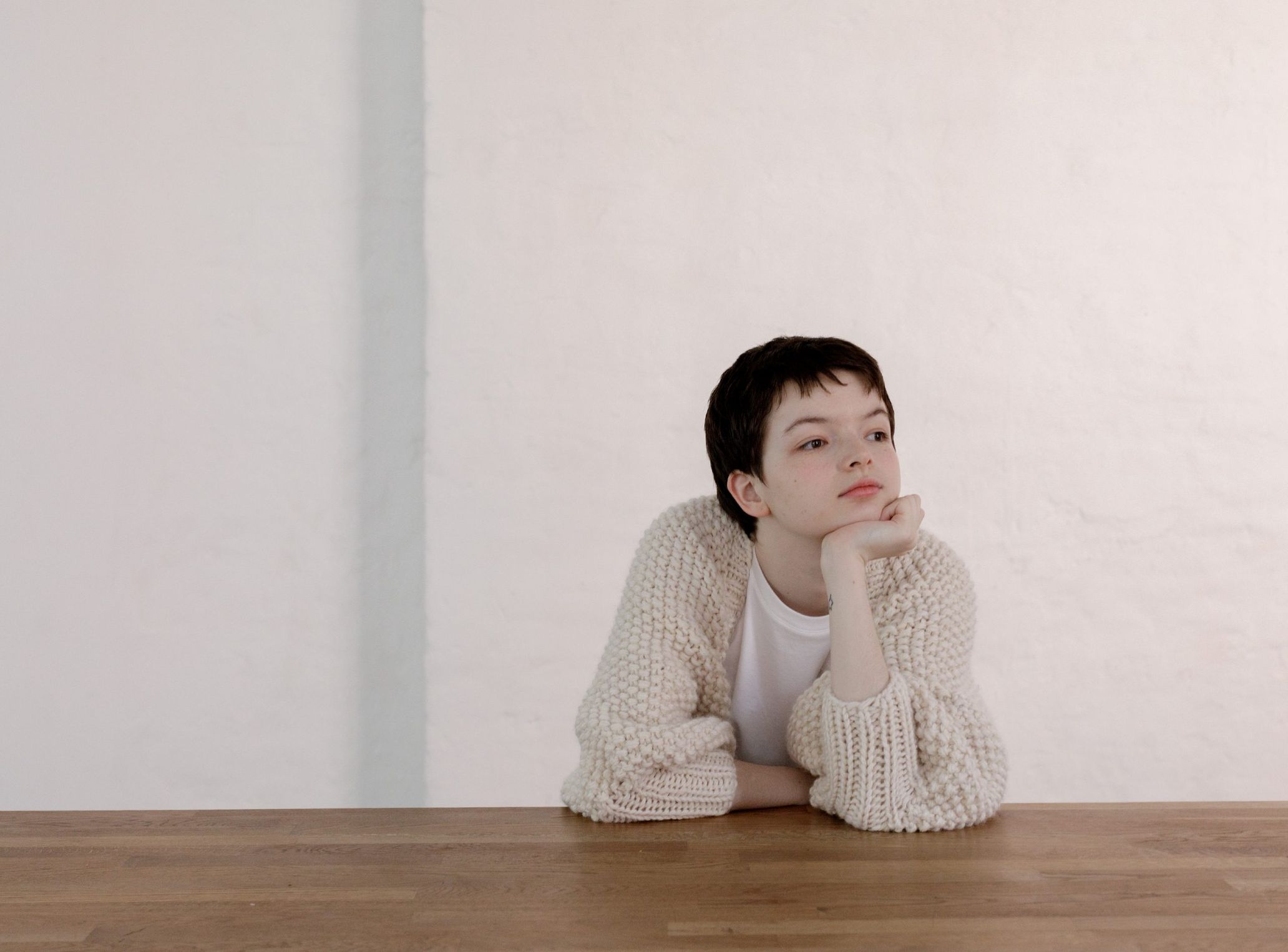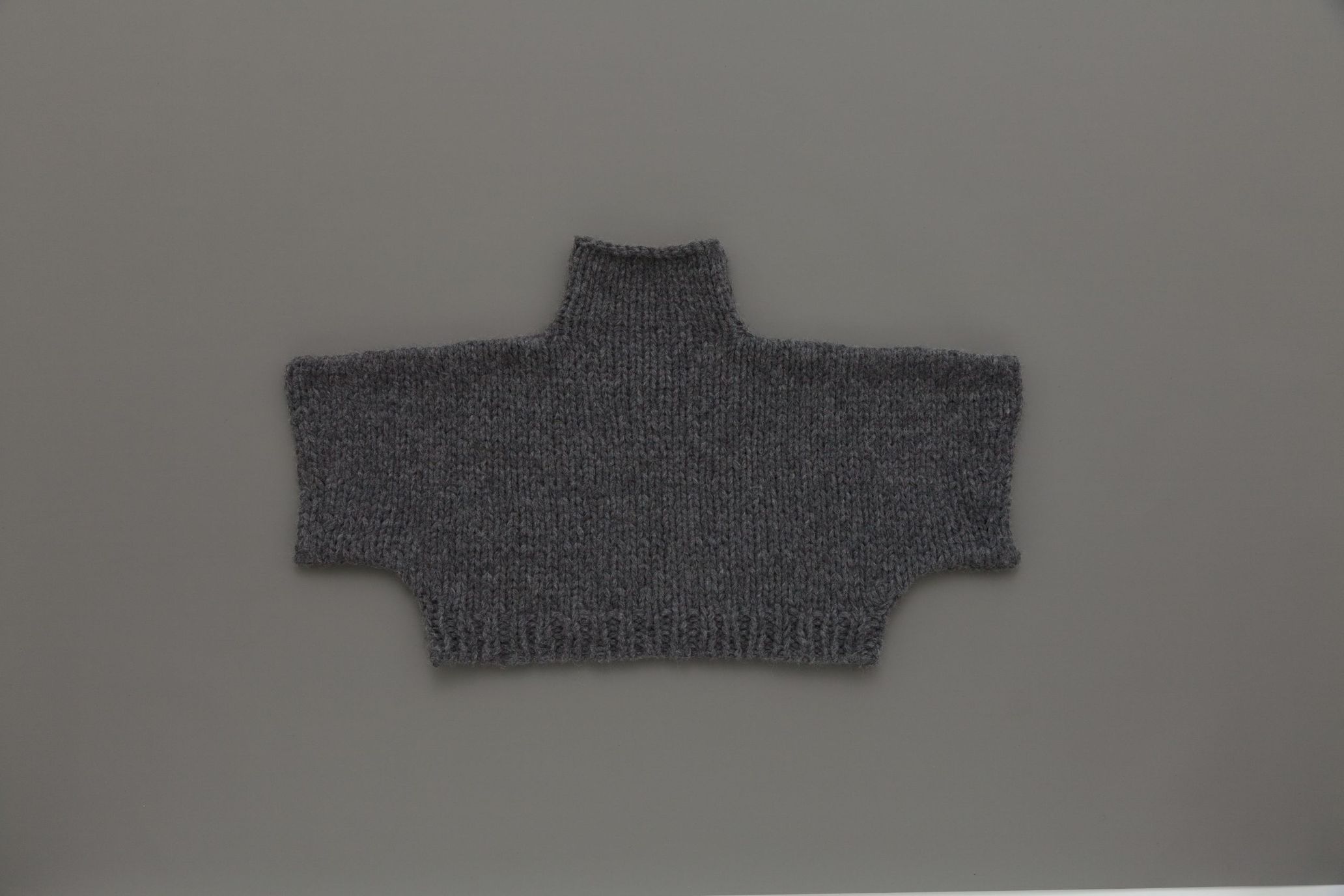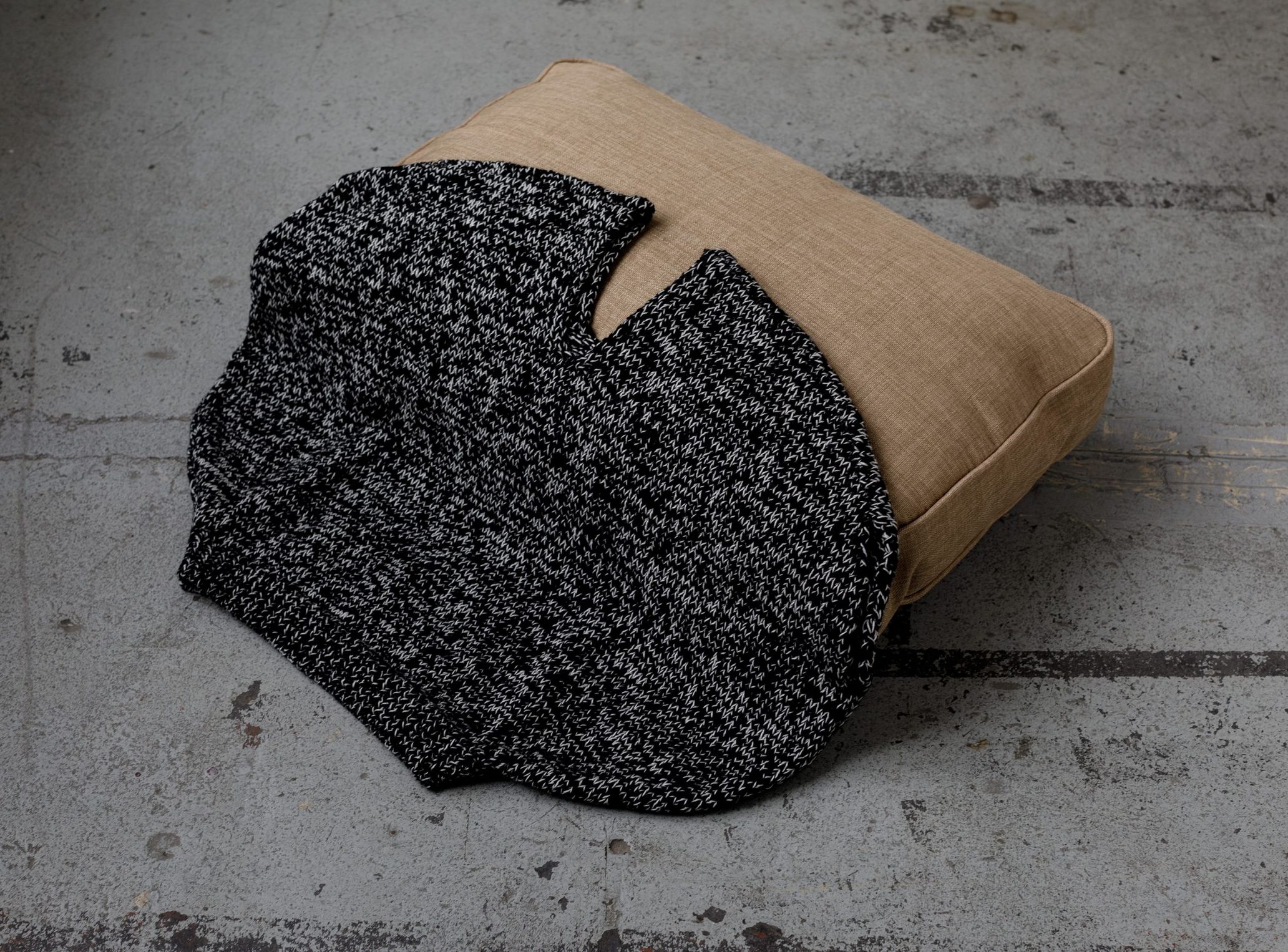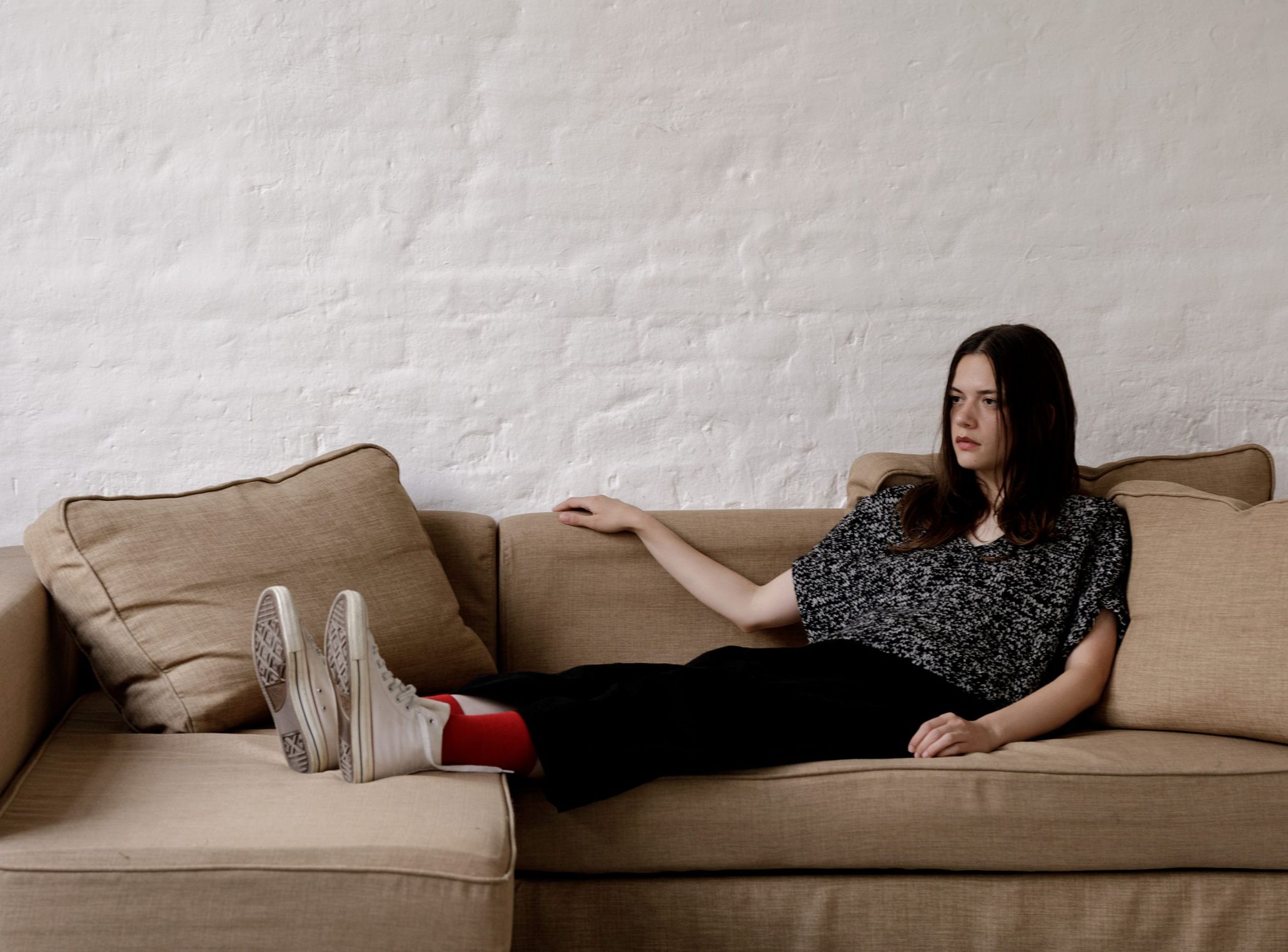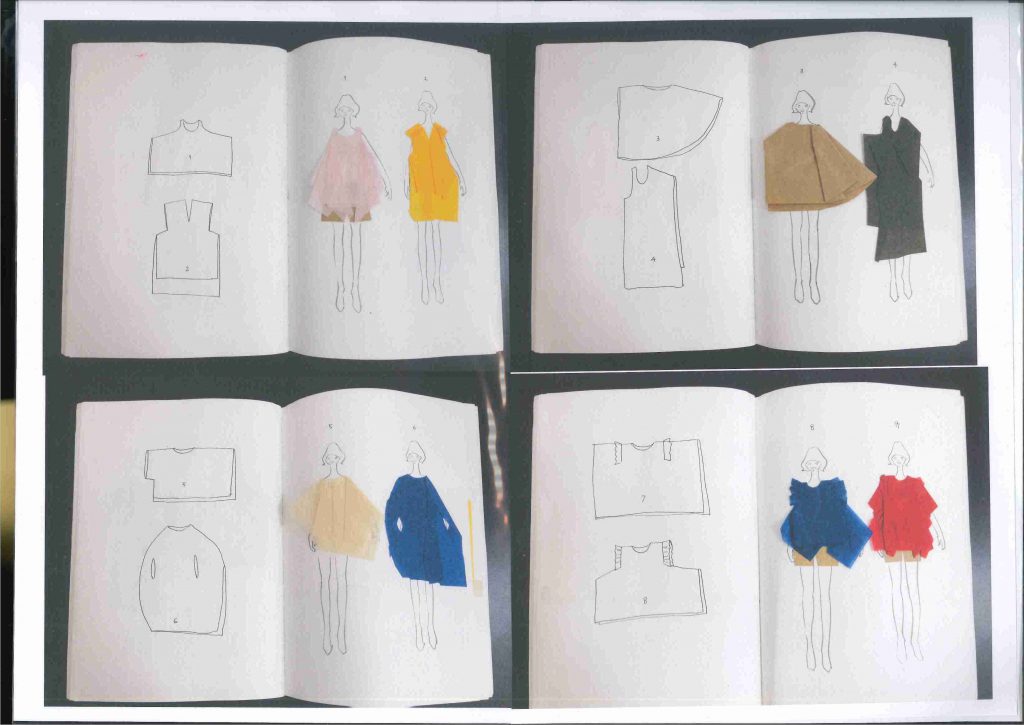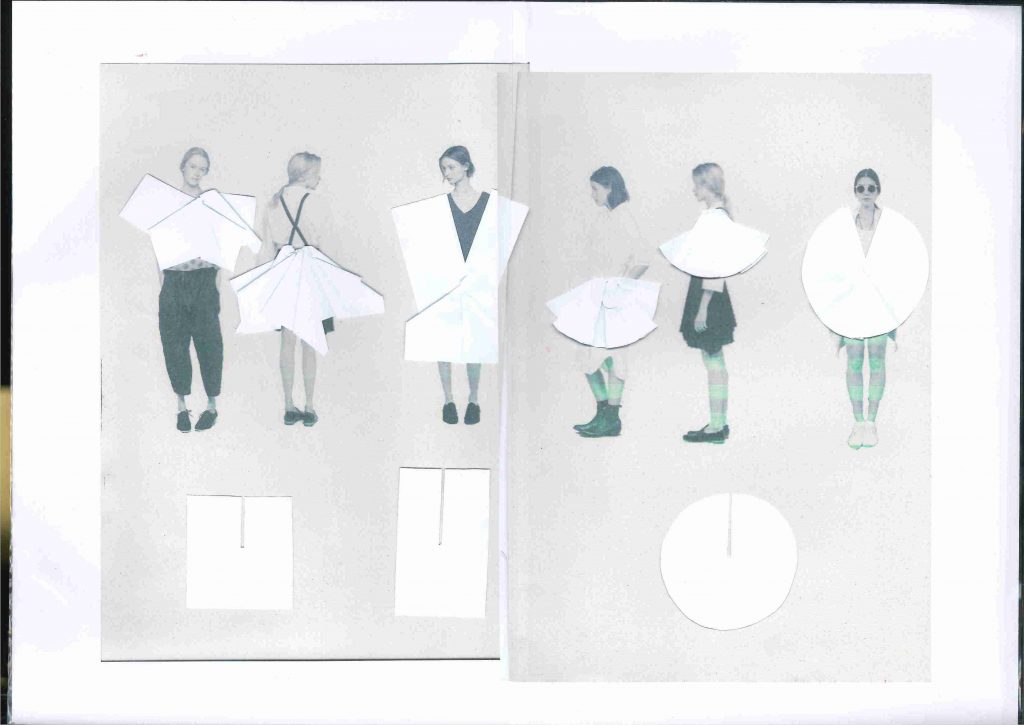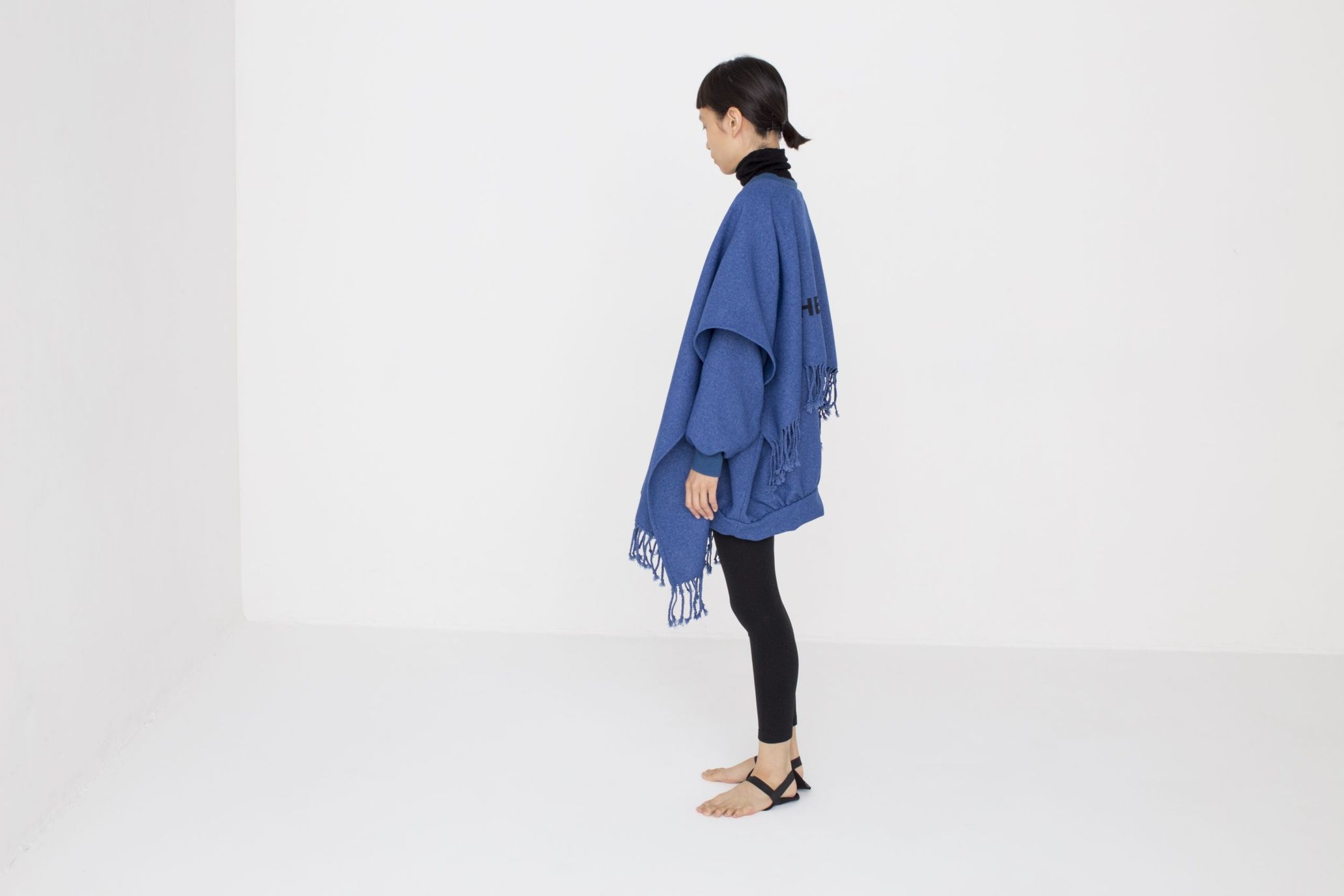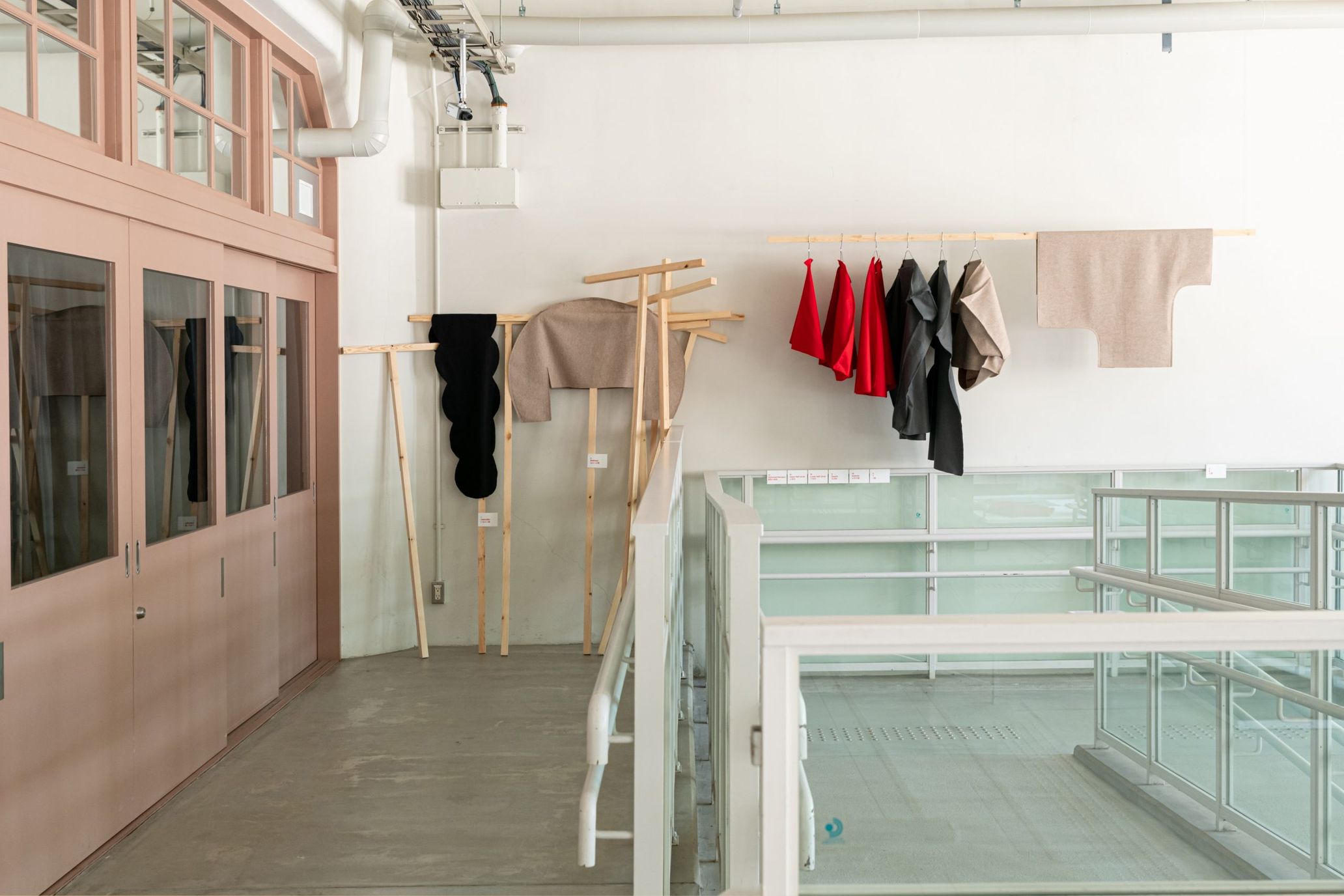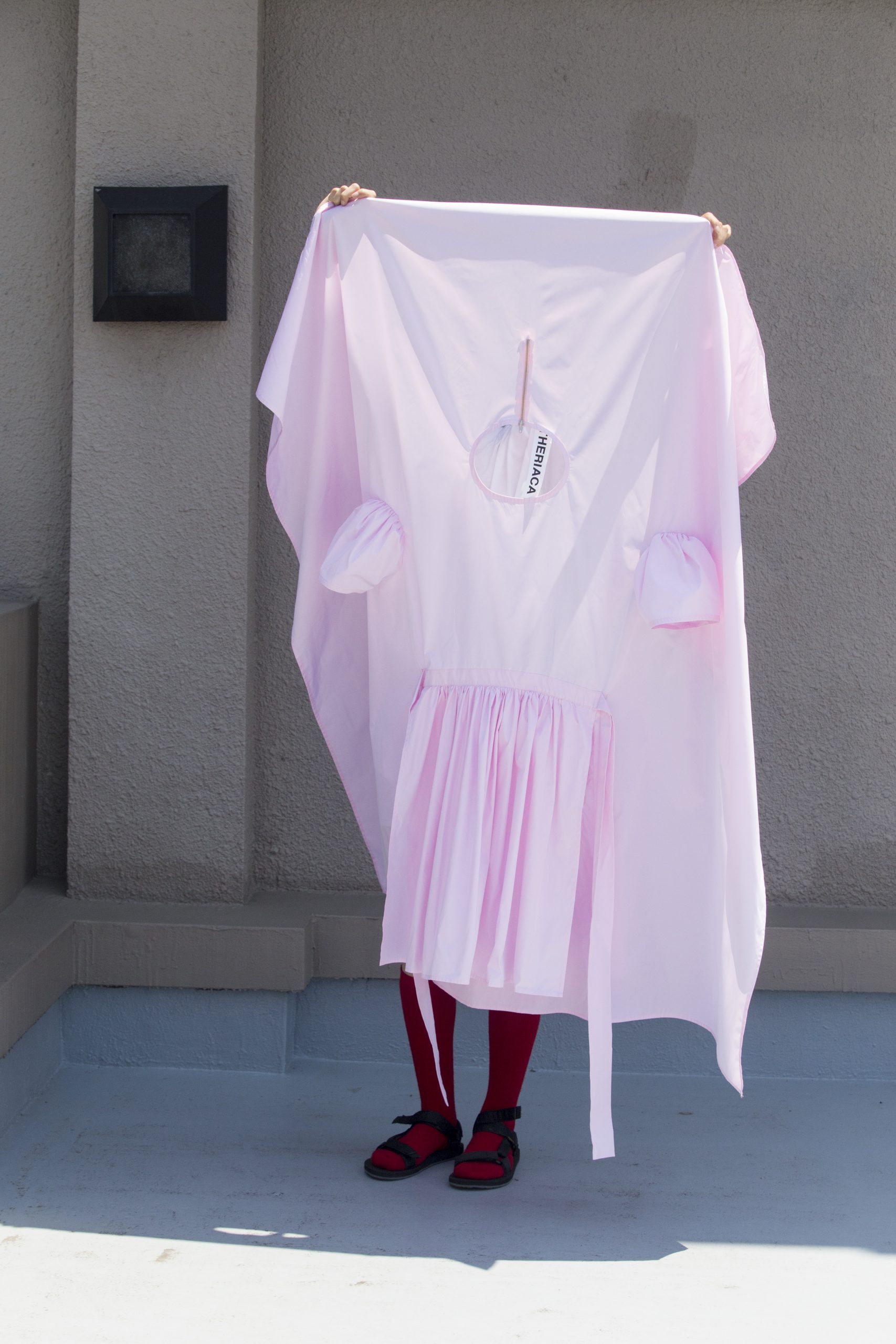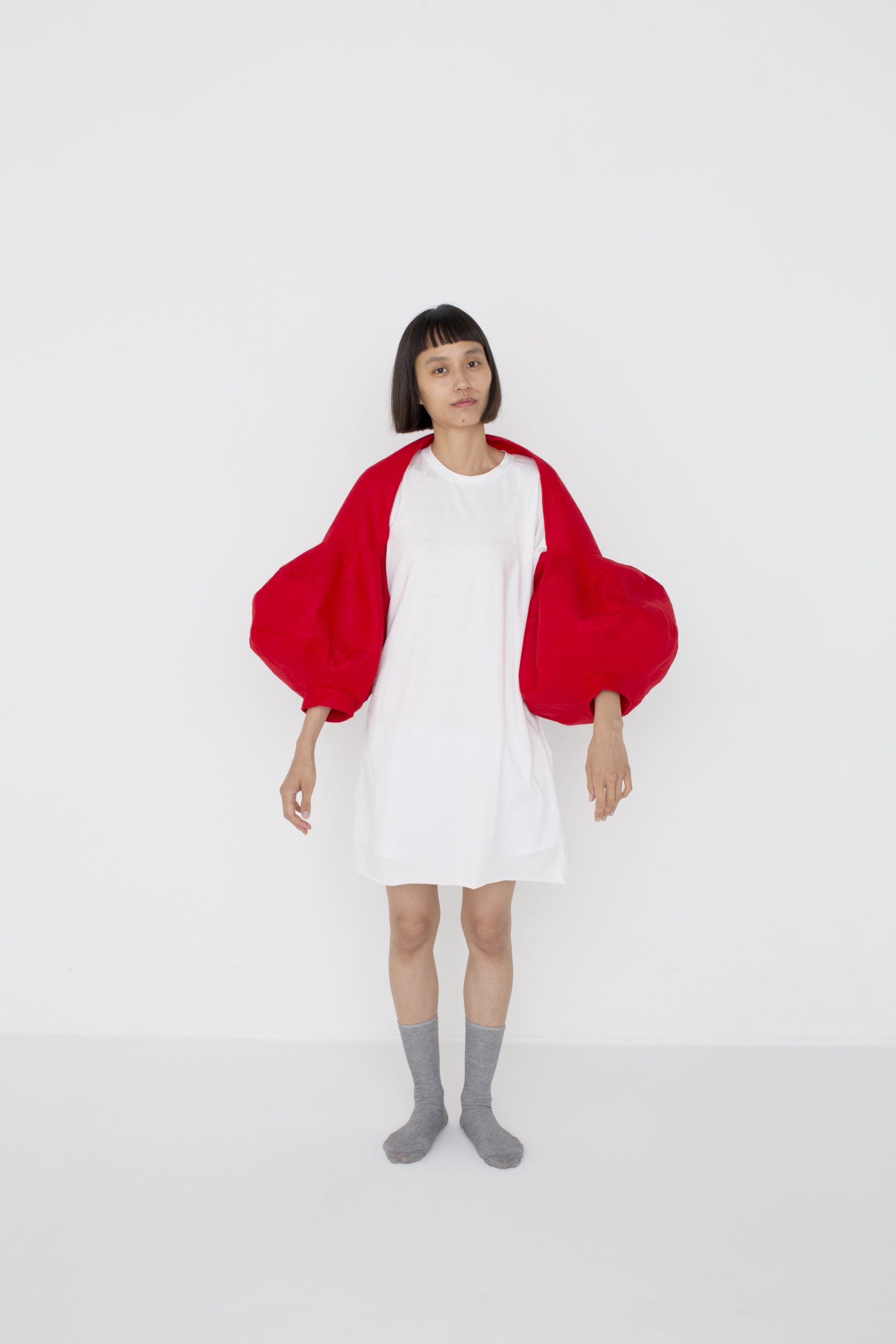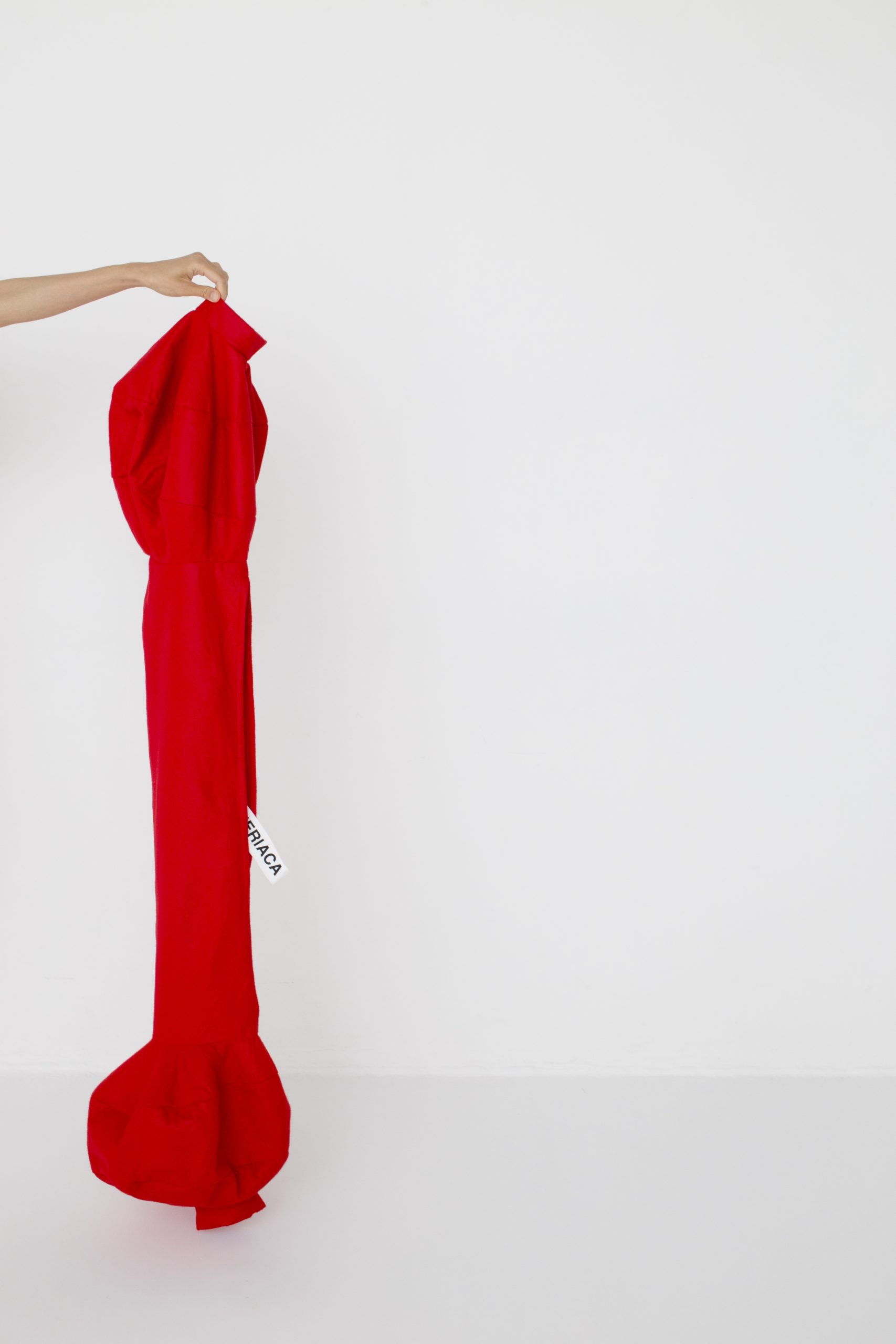Clothing is one of the necessities of life, among food and shelter. As the pandemic still forces us to stay home, the way we enjoy fashion is rapidly changing worldwide. Asuka Hamada, designer of Berlin-based fashion brand “THERIACA,” has been advocating her idea of “fun through clothes” by holding exhibitions and publishing her own books. With designs that combine fashion, humor and art, her clothes possess a mysterious power, exciting the hearts of whoever wears them.
She recently wrote Funny Shape Knits, her new book completely focused on knitted items, and started her YouTube channel “Asuka Creative Studio.” In this interview, we will explore Asuka’s thoughts toward clothes, focusing on her exhibited works until now, and particularly on Funny Shape Knits.
–I read some of your book Funny Shape Knits, and it was fascinating. I liked how the first two pages have different knitted goods lined up as if they were in a chemistry textbook; Theriaca also means universal antidote, so it’s kind of chemistry-ish. The clothes you make, as well as your knitted ones, all share some sort of playfulness, which is very attractive. Do you have any new, funny stories to tell us?
Asuka: I can’t go out because of the pandemic, so it’s hard to come across anything fun or interesting, but I love to mess around at home, and I’m doing that as much as I can: for example, I’m having fun making stuff with cookie dough like pottery, trying to deviate as much as possible from the original concept of cookies. Even when I was little, I’d make pancakes by drawing line art instead of making them flat, and they’d get mad at me for playing with food. It’s the same with clothes; you can find something new and stimulating by messing around like that.
–You mentioned that Funny Shape Knits was your first book about knitting; what made you decide to publish it?
Asuka: Actually, from the time I published my first book Katachi no Fuku, I thought it’d be interesting to do the same thing with knitwear, so I planned for it since around five years ago. It takes a long time to knit, so while I was waiting to have enough time on my hands, the world turned like this.
–I think that the “shapes” showcased in Funny Shape Knits are only made possible thanks to the softness peculiar to knitwear. Was there anything difficult or particular about dealing with knitwear?
Asuka: Well, sweaters with weirdly placed sleeves were definitely only possible because I was using knitting techniques. There are many other books on elaborate knitting patterns, so I wanted to pursue new possibilities for knitting by combining interesting patterns with simple knitted fabrics and colors that only I, as a fashion designer, can create. The hard part was that it took a long time to knit. Since I sometimes change the design while knitting, I would spend one day or two untying what I previously knitted.
–In a past interview, you said that the process of knitting is fun, but I think it’s a bit similar to meditation since silently knitting for a long time requires concentration. Are you good at immersing yourself in the work you’re doing? I’m always thinking about this and that inside my head, so it’s hard for me to concentrate, and I admire people who can.
Asuka: Knitting may be similar to meditation since you can free yourself of obstructive thoughts while doing so. Of course, in my case, rather than silently knitting a pre-existing pattern, I’m knitting while I think about the design, or if the shape is cute enough, so I can’t free my mind. However, as you said before, I’m the type of person who can immerse herself in whatever I’m doing. I’m always thinking about what could be interesting to do or try, so I may be a bit more curious than others. When I get too much into games though, I end up playing forever, and my life ends there.
–With THERIACA, you’re aiming to create different “shapes;” when you were a student, or when you started the brand, was there a specific work that made you change the direction of your research?
Asuka: Rather than aiming to create different “shapes,” I’d say that I’m more interested in how my patterns change the silhouette of the people wearing them. When I was a corporate designer, I used to draw design patterns on paper, and I started to feel my limitations: I couldn’t design something I had never seen. I went back to being a student when I joined the University of the Arts London, so I had more time to design in 3D, which is basically like sculpting fabric, and I felt like my potential was growing since I started doing that. I ignored almost all of my university homework and researched what I wanted to.
–At the previous exhibition, I really liked how different “shapes of things” like chairs, bed sheets, and cushions, would change their silhouette when worn by people. When I saw pictures of people wearing your knitwear, I realized it possesses the potential to change into even more shapes. In your daily life, are you particularly conscious of the “shapes of things?” For example, if it’d be interesting to make something into a clothing piece. Can you tell me about your inspiration process?
Asuka: People originally made clothes to wrap their bodies with them, so I think that the correct way to make clothes is to measure the shape of the human body and make clothes that perfectly fit those measurements. However, I think that clothes are not only supposed to be functional but also act as wearable sculptures, and I’m interested in clothes with, for example, strange, puffy portions in unnecessary places, or outfits with portions that move when pulled by the movements of your body. So, in terms of distancing myself from the human shape, I sometimes look at sofa covers and think that something non-human is “wearing” them, and I sometimes research how creators from different fields actively see things like art, dance and movies. The farther my source of inspiration is from clothes, the more I feel like I made new discoveries. Rather than being particularly conscious of the shape of things, I think I’m more aware of the expressive potential of fabric in general.
–How does a person like you, who keeps her distance from fashion trends, prepare a theme when presenting your collection or exhibition?
Asuka: As an apparel business model, researching trends and riding on that wave is easy enough to understand, however, I don’t want to reverse engineer fashion trends, but rather to make something that I’m already interested in even more interesting; that’s how I prepare when I present my work.
When I was doing art, I started understanding that emptiness and sadness that leaves the viewer behind and alone, so while filling the gap between my expression and the world around me, I’m purposefully showing my individuality as much as I can. That’s why, especially for exhibitions in museums, I’ll try to decide on a theme that can entertain older people as well as children, and explain my collections choosing words that are easier to understand.
It’s rare for me to decide a theme first and create after. First, I take time to create something that it’s hard to explain even for me and then search for the words to easily explain it to everyone. Sometimes the words you find can inspire to expand your creativity, but clear and easy to understand themes only come out while I’m creating, so they’re hard to explain.
–I like how exciting it is to wear THERIACA: they don’t look like clothes at first, so you always wonder how they’re going to look when you wear them. One of the most appealing points of your brand is how it gives you the possibility to experience the “fun of wearing clothes” once more; it even says to “enjoy!” at the beginning of Funny Shape Knits. Can you tell us about your own experiences with feeling the “fun of wearing clothes?”
Asuka: I’m glad that my works coney that. A lot of my work is based on my will to convey how fun and exciting clothes are. I remember that when I was in kindergarten, I used to love wearing my favorite clothes, or when people around me would praise my outfit. After all, fashion is an expression, so if it makes someone talk to you, it’s proof that you succeeded, or rather that the clothes themselves have done more than just be clothes.
When I see customers at my exhibitions try on my clothes, it often reminds myself about how fun clothes are. In my latest collection, there is a dress that looks like a table cover, and if a pregnant woman wears it, it’ll take her shape, if a guy on a bicycle wears it, it’ll take his shape; the shape and the mood of clothes change depending on who’s wearing them, which I think it’s what’s fun about them.
–While having bizarre shapes, THERIACA’s clothes can also be worn anytime, as they fit well into everyday life, which is great. Do you think about this factor when making clothes, or when wearing them?
Asuka: I do a lot. For exhibitions, I sometimes make clothes which can’t be worn and are just rough versions of my ideas, and stage costumes don’t count, since they’re made to express different morals or world views. In the case of collections, I wouldn’t make clothes unless I would want to wear them myself, so I’m always pushing myself to make something that comes from my weird ideas, but that I would still want to wear. The concept is basically making something that fits into everyday life, but it’s still recognizable as weird fabric art.
–Could you tell me about what changed since you started THERIACA, and what actually didn’t change at all?
Asuka: I quit being a corporate designer and started my own brand, so I think it makes sense for me to do something that I couldn’t do before. I’m always aiming to make something that only I could make, something that I have a lot of fun while making, something that I really want to make, or something that I can always suggest to people.
–In a previous interview, you said that your favorite color is red; your selection of colors is exquisite. Gingham check patterns can look warm and fuzzy with the right color, and your selection makes such patterns look contemporary and classic at the same time. How do you select your colors?
Asuka: It’s hard to explain with logic since I only match colors that feel good to me; the only thing I could explain is that clothes are combinations of colors and fabrics, so you have to think about the balance between the two. A gingham check pattern woven with linen or cotton will look warm and fuzzy, but one woven with synthetic fiber will look sharp. I originally graduated from the textile department, so some of my designs in Funny Shape Knits may look plain at first, but I’m actually very particular about the fabric that I use.
–In a past interview, you said that Berlin is perfect for the people who still want to make things without rushing; do you still have that impression? The damage caused by the pandemic is becoming more and more serious throughout Europe. Are there any changes in Berlin’s atmosphere, your life, or your creativity?
Asuka: Berlin has gradually become a busy city. Rents and labor costs are rising and taking away time and flexibility from creators. I got lucky since I started my brand when it was still affordable, but if more and more creators with money and time have a hard time living here too and leave, the atmosphere of the city will change, and I’m a bit worried about that.
As for the repercussions of the virus, museums and theaters have closed since the second lockdown, and everyone seems to be hungry for culture. However, it’s fascinating to see how fast society has changed after being forced to do everything online. I’m excited to see what new things will such a restricted environment bring.
–Holding an actual exhibition might be impossible for now, but what are your plans for the near future?
Asuka: I’m working on a project where I’m revisiting knitting from a new perspective, and I’m also developing a new kind of yarn with the long-established yarn manufacturer “DARUMA,” which will be announced for this Spring/Summer. What we’re making is going to be exciting; you’re definitely going to love it. Apart from that, I’m trying to find different activities (including YouTube) to convey the fun of both fashion and creation, which I well understand how priceless is.
I hope I can hold an exhibition for this fall, too. Few people in Berlin are interested in being fashionable, so I want to go to Japan to see those kinds of people; it’s exciting. There are too many things I want to do and not enough time on my hands. Since I’m the type of person who takes time to work on each project until I am completely satisfied, I’m pretty slow at announcing new stuff, but I hope that you’ll continue to have the patience to watch over my work.
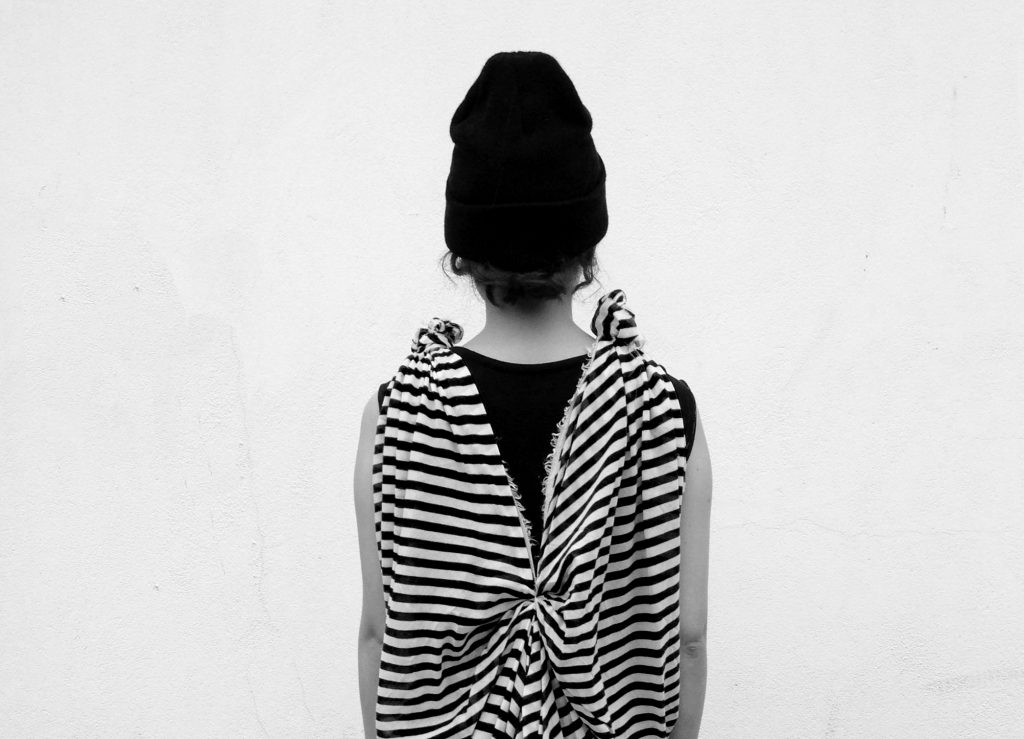
Asuka Hamada
Asuka is a fashion designer. After studying textile design at the Kyoto City University of Arts and Nova Scotia University of Arts in Canada, she worked in apparel planning as a designer for several years before moving to England. Currently, she continues her studies in fashion and patterns to come out with new and free ideas for her clothes. In 2014, while attending the London College of Fashion, she started her own brand THERIACA. In 2015, she moved to Berlin to further develop her work. She has displayed her work in many different ways; from galleries and museums to selling at various shops, she has also written books about her art. Her books include Katachi no Fuku, Ookina Fuku & Chiisana Fuku, Piece Work no Fuku, Amai Fuku (Bunka Publishing Bureau), Funny Shape Knits (Bunka Publishing Bureau), THERIACA Shapes and Forms: Clothes, The Body (torch press).
www.theriaca.org
Instagram: @_theriaca_
YouTube Channel: Asuka Creative Studio
Translation Leandro Di Rosa

